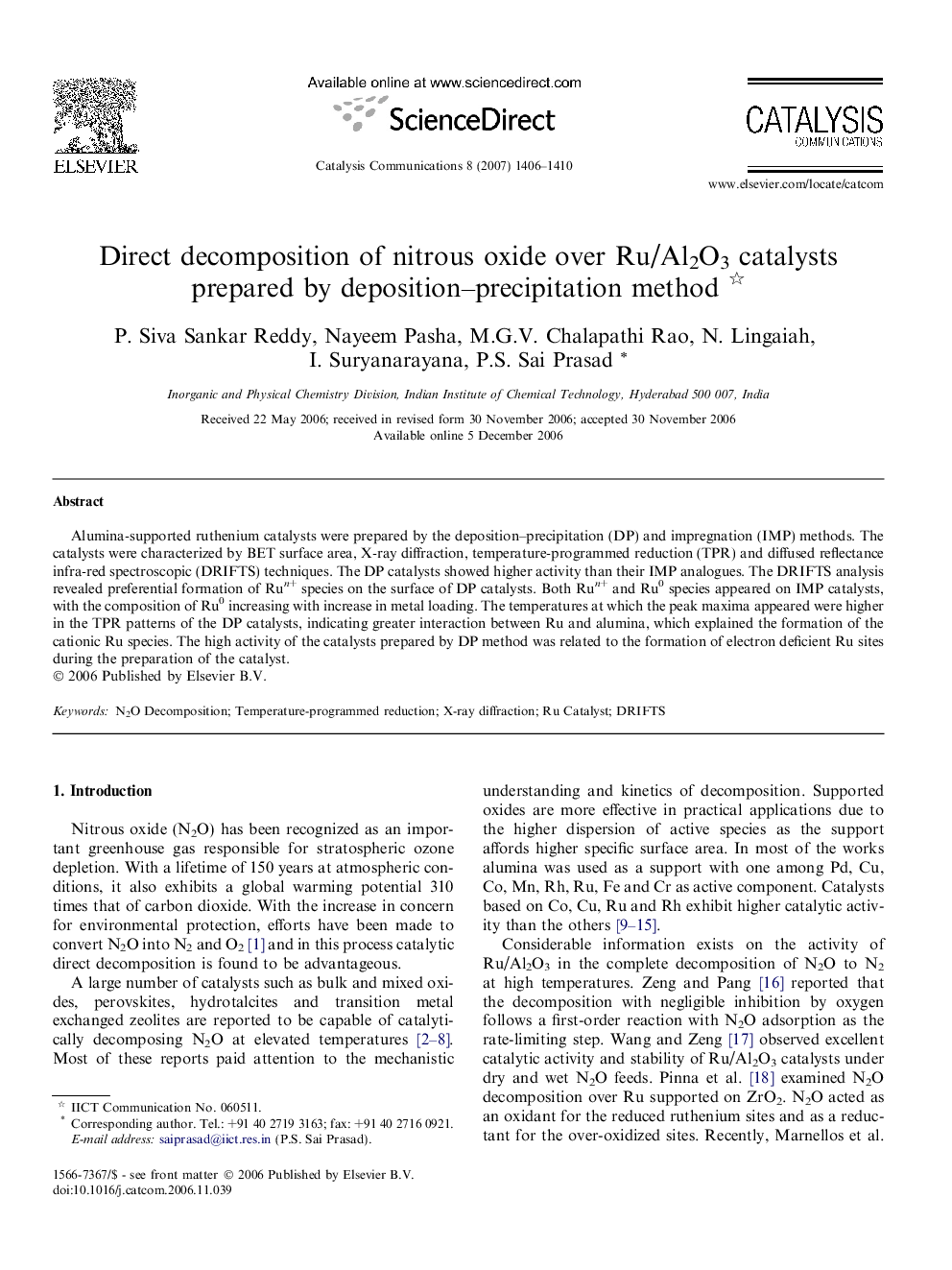| کد مقاله | کد نشریه | سال انتشار | مقاله انگلیسی | نسخه تمام متن |
|---|---|---|---|---|
| 52437 | 46874 | 2007 | 5 صفحه PDF | دانلود رایگان |

Alumina-supported ruthenium catalysts were prepared by the deposition–precipitation (DP) and impregnation (IMP) methods. The catalysts were characterized by BET surface area, X-ray diffraction, temperature-programmed reduction (TPR) and diffused reflectance infra-red spectroscopic (DRIFTS) techniques. The DP catalysts showed higher activity than their IMP analogues. The DRIFTS analysis revealed preferential formation of Run+ species on the surface of DP catalysts. Both Run+ and Ru0 species appeared on IMP catalysts, with the composition of Ru0 increasing with increase in metal loading. The temperatures at which the peak maxima appeared were higher in the TPR patterns of the DP catalysts, indicating greater interaction between Ru and alumina, which explained the formation of the cationic Ru species. The high activity of the catalysts prepared by DP method was related to the formation of electron deficient Ru sites during the preparation of the catalyst.
Journal: Catalysis Communications - Volume 8, Issue 9, September 2007, Pages 1406–1410